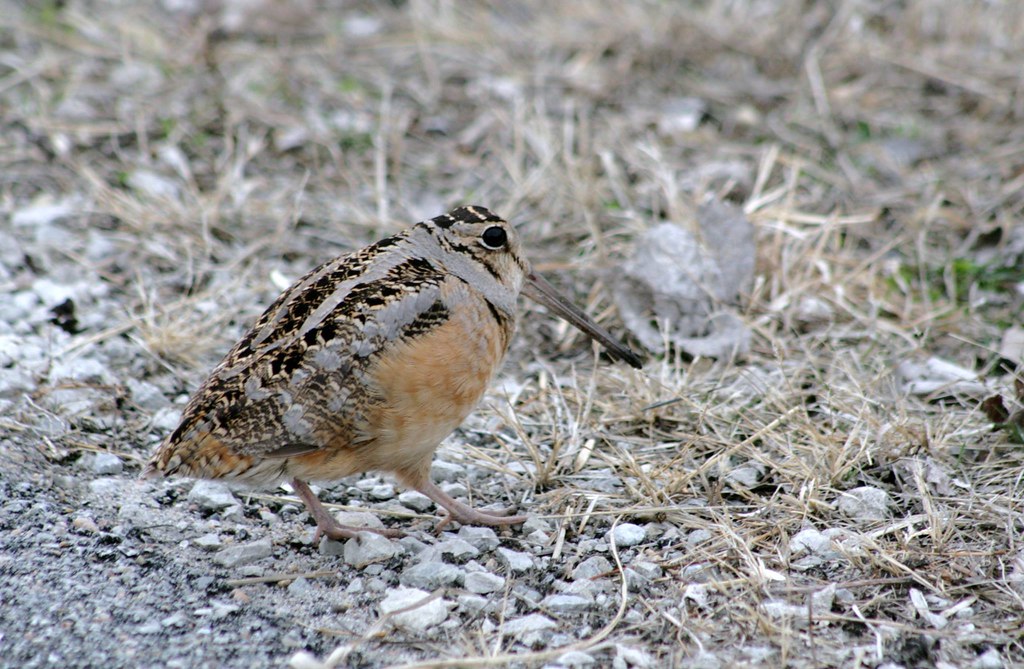Featured image credit: “American Woodcock” by Fyn Kynd is marked with CC BY 2.0.
You really shouldn’t leave this page until you watch a Woodcock walk! ↓↓↓↓
It took me a REALLY long time to figure out what this was. I kept hearing a strange call at dusk and early evening. It wasn’t a song, it didn’t really sound bird-like, but I didn’t think there was anything else that would be making that call at dusk. All I had to go on was what I heard, that that’s hard to Google.
Being slightly stubborn about wanting to solve mysteries of this nature, I decided my only recourse was to go through the Merlin Bird App (from Cornell) and click on EVERY bird, and listen to it’s songs and calls until I found what I had heard (it was a call). Did I mention I can be persistent about these things occasionally?
Well, I initially thought this could be a Yellow-breasted Chat. However recently a friend was over (who also lives in Nelson County) and said, “Did you hear? The woodcocks have started their spring calls!” We had a conversation and it turns out the Woodcock makes it’s call at dusk as well… so then I got suspicious about my initial identification. Of course I had to look them up on the Merlin Bird App, and low and behold, although I have hear the Yellow-breasted Chat here, what I was hearing at dusk was a Woodcock! Below you can hear the strange “Come to bed now” call of the American Woodcock.
So: 1) excitement about a new bird identification!! (and one I knew nothing about) and 2) HAVE YOU SEEN A WOODCOCK WALK? This is not a joke. You MUST watch this video of the Woodcock walking.
Finally, just to mention that it’s long beak is used to probe deep into the ground and get earthworms. It’s bulbous eyes are far back on it’s head, which allows it to “see behind” it watching for predators when it’s head it down probing the ground.
To hear songs, learn identification information, migratory patterns, and some fun facts, check out the American Woodcock page offered by one of my favorite resources: the Cornell Lab of Ornithology »
“American Woodcock” by U.S. Fish and Wildlife Service – Midwest Region is marked with CC BY 2.0.










